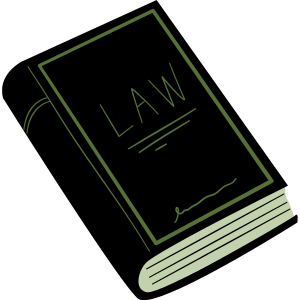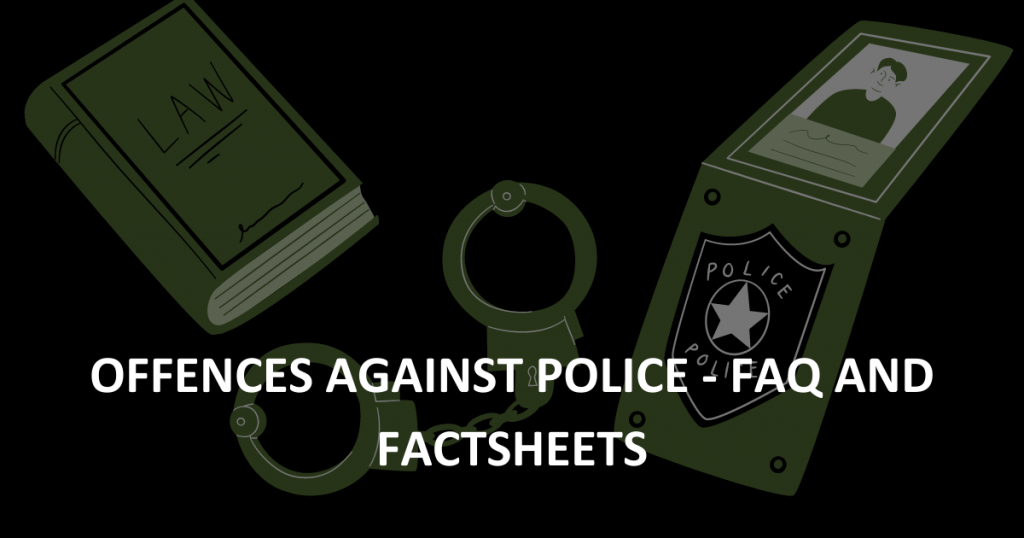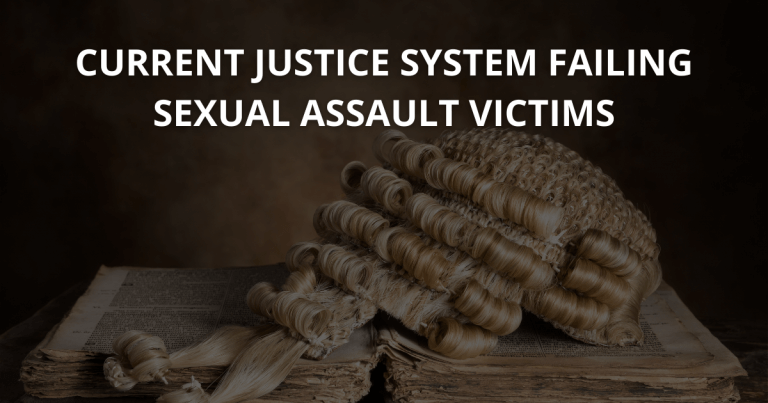Resist arrest, assault police and hinder police are three types of criminal offences against NSW police.
However, if police cannot prove that they were lawfully exercising their powers to arrest, the court can dismiss the charges.
This article is also available as a factsheet available here.
Resist Arrest or Hinder Police
 It is an offence to hinder police or resist arrest under section 546C of the Crimes Act 1900.
It is an offence to hinder police or resist arrest under section 546C of the Crimes Act 1900.
“Any person who resists or hinders, or incites any person to assault, resist or hinder a police officer in the execution of his or her duty will be liable…”
Police will need to establish that the person:
- resisted arrest;
- hindered police; or
- encouraged someone else to do this.
The only other factor necessary to establish this offence is that the victim was a police officer executing their duties at the time. See below how this can be disproven in certain circumstances.
The maximum penalty for this offence is 12 months jail, a $1100 fine, or both.
Assault Police
The offence of ‘assault police officer in the execution of their duty’ contrary to section 60 of the Crimes Act 1900 is a serious charge.
Examples of this kind of offence include:
- kicking, punching or pushing a police officer to stop them arresting you or someone else,
- threatening a police officer,
- or seeking out and threatening/assaulting a police officer whilst they are off-duty.
However, this offence can also arise in circumstances where you are resisting the arrest of an unlawful detention.
To establish this offence police must prove:
- the person assaulted, harassed or intimated a police officer; and
- the officer was in the execution of their duties at the time of assault.
If the assault occurred during a public disorder, or caused actual bodily harm, the charge will be more severe.
The maximum penalties for the offence range depending on the circumstances:
- Where there is no actual bodily harm: imprisonment for up to 5 years.
- Where there is actual bodily harm. Commonly, scratches and/or bruises are deemed to amount to actual bodily harm: imprisonment increases to 7 years.
- Where there is grievous bodily harm (wounds or permanent or serious disfiguring of the person) caused recklessly: imprisonment up to 12 years
Defence
A defence exists where the person did not believe, and could not reasonably believe, that the person was a police officer. Otherwise, it is sometimes possible to raise the defences of necessity, self-defence or duress as a reason for the alleged conduct. These are often difficult offences to prove, however.
“In execution of their duty”
 This element of the offences assists in outlining that police officers must be acting lawfully when these charges are laid.
This element of the offences assists in outlining that police officers must be acting lawfully when these charges are laid.
Part 15 of the Law Enforcement (Powers & Responsibilities) Act 2005 (NSW) (‘LEPRA’) legislates safeguards police must comply with when executing their duties.
Under section 202 of LEPRA, a police officer (or one of the officers in a group) must, as soon as reasonably practicable:
- Tell the person (or group) they are a police officer (unless they are in uniform);
- Tell the person (or group) their name and their place of duty;
- Tell the person (or group) the reason for the exercise of their powers.
In the case of a direction, they must do this before the direction if made.
Section 204 does note that failure of an officer to tell someone their name or place of duty doesn’t render the exercise of power unlawful.
Unlawful arrest
If the defence can prove that the arrest itself was unlawful, then the court can dismiss the charges of resist arrest, hinder police or assault police.
 If an officer wasn’t acting lawfully in the arrest, the defence can argue that they were not in execution of their lawful duties.
If an officer wasn’t acting lawfully in the arrest, the defence can argue that they were not in execution of their lawful duties.
The power for police to arrest someone without a warrant is governed by section 99 of LEPRA. Police can arrest someone without a warrant if they suspect on reasonable grounds that a person is committing or has committed an offence.
Police must also satisfy themselves that the arrest is reasonably necessary for one or more of the following reasons:
- (i) to stop the person committing or repeating the offence or committing another offence,
- (ii) to stop the person fleeing from a police officer or from the location of the offence,
- (iii) to enable inquiries to be made to establish the person’s identity if it cannot be readily established or if the police officer suspects on reasonable grounds that identity information provided is false,
- (iv) to ensure that the person appears before a court in relation to the offence,
- (v) to obtain property in the possession of the person that is connected with the offence,
- (vi) to preserve evidence of the offence or prevent the fabrication of evidence,
- (vii) to prevent the harassment of, or interference with, any person who may give evidence in relation to the offence (i.e. a witness),
- (viii) to protect the safety or welfare of any person (including the person arrested),
- (ix) because of the nature and seriousness of the offence.
If one or more of the above reasons is not satisfied, police do not have the power to arrest.
In this case, they should issue a Future Court Attendance Notice to the person they suspect has committed the offences.
Resist arrest case study
*Kira was walking down the road with friends when she walked past a car parked illegally across the footpath. Kira told the driver to move otherwise the police might fine them. However, Kira wasn’t aware that the car was in fact an unmarked police car with plain clothes police officers inside.
Then, the car followed her down the footpath, telling her to stop walking. The officers got out of the car and told her to stop walking. Police alleged Kira stuck her rude finger up at police. They flicked a cigarette out of her mouth and arrested her for ‘offensive behaviour’.
Kira was brutally arrested, taken to the ground with significant force.
Police conveyed Kira to the local station and charged her with:
- offensive behaviour under section 4 of the Summary Offences Act 1988 (NSW);
- assaulting a police officer under section 60 of the Crimes Act 1900 (NSW); and
- resisting arrest under section 546C of the Crimes Act 1900 (NSW).
The charges were similar to what is called a ‘Trifecta Arrest‘.
Magistrate dismisses charges, opening way for suing the Police
The Magistrate dismissed the resist arrest and assault police, finding that the arrest was unlawful. This was partly because police hadn’t identified themselves as per section 202 of the Law Enforcement (Powers & Responsibilities) Act 2002 (NSW). This legislation has the acronym of LEPRA.
Furthermore, the Magistrate found Kira not guilty for the offensive behaviour.
Subsequently, Kira filed a claim for false imprisonment, assault and battery in the civil jurisdiction of the NSW District Court.
* we changed Kira’s name in order to protect her identity
If police charge you with any of the above offences and you believe that police may not have followed the required powers, contact us for free, confidential advice.






